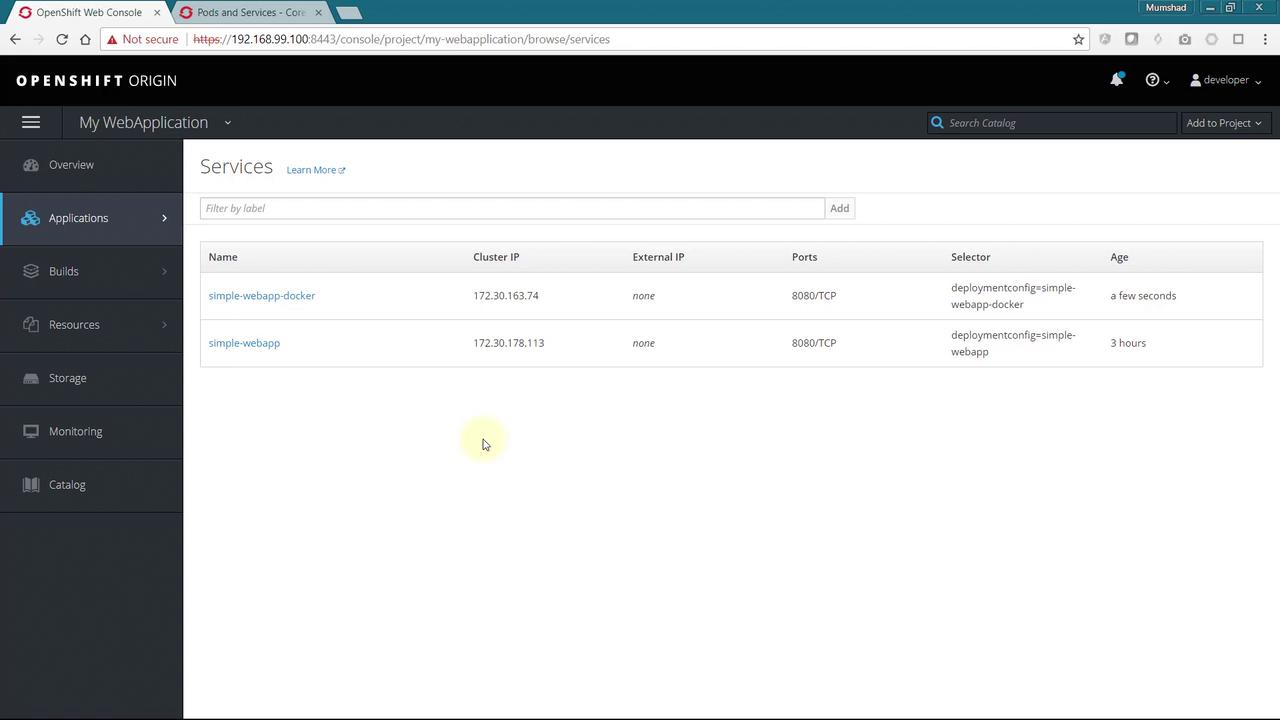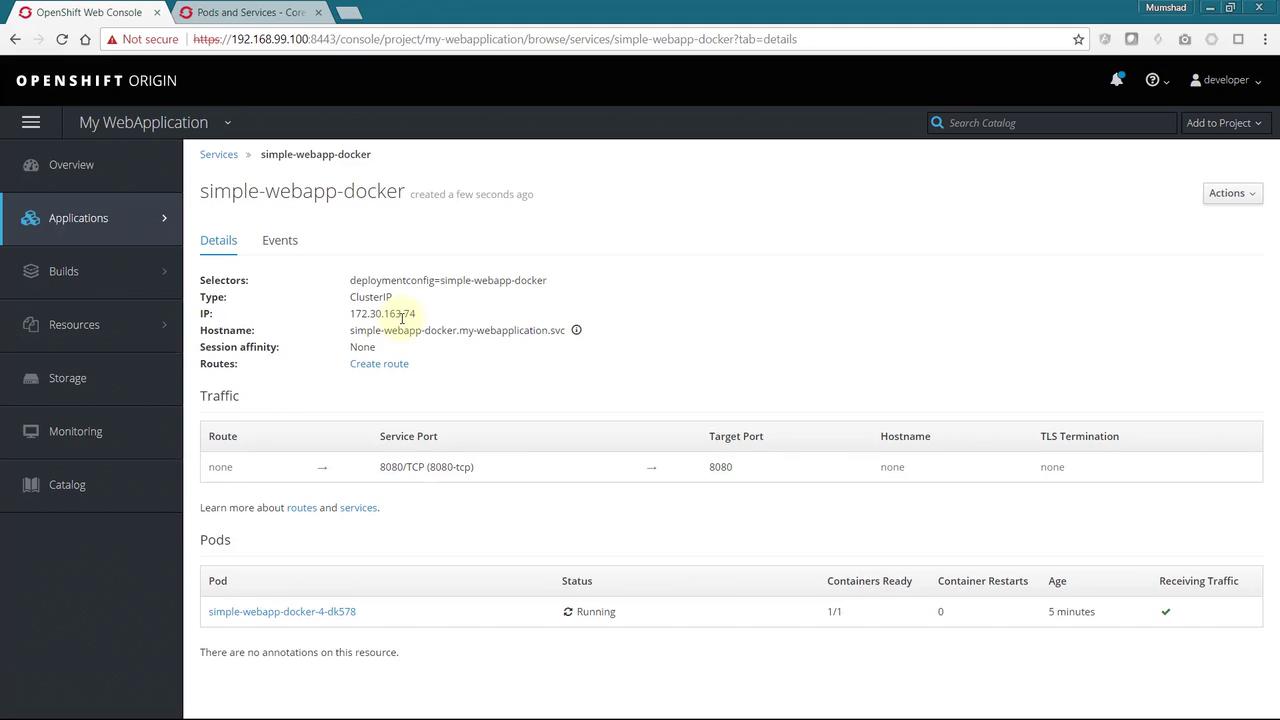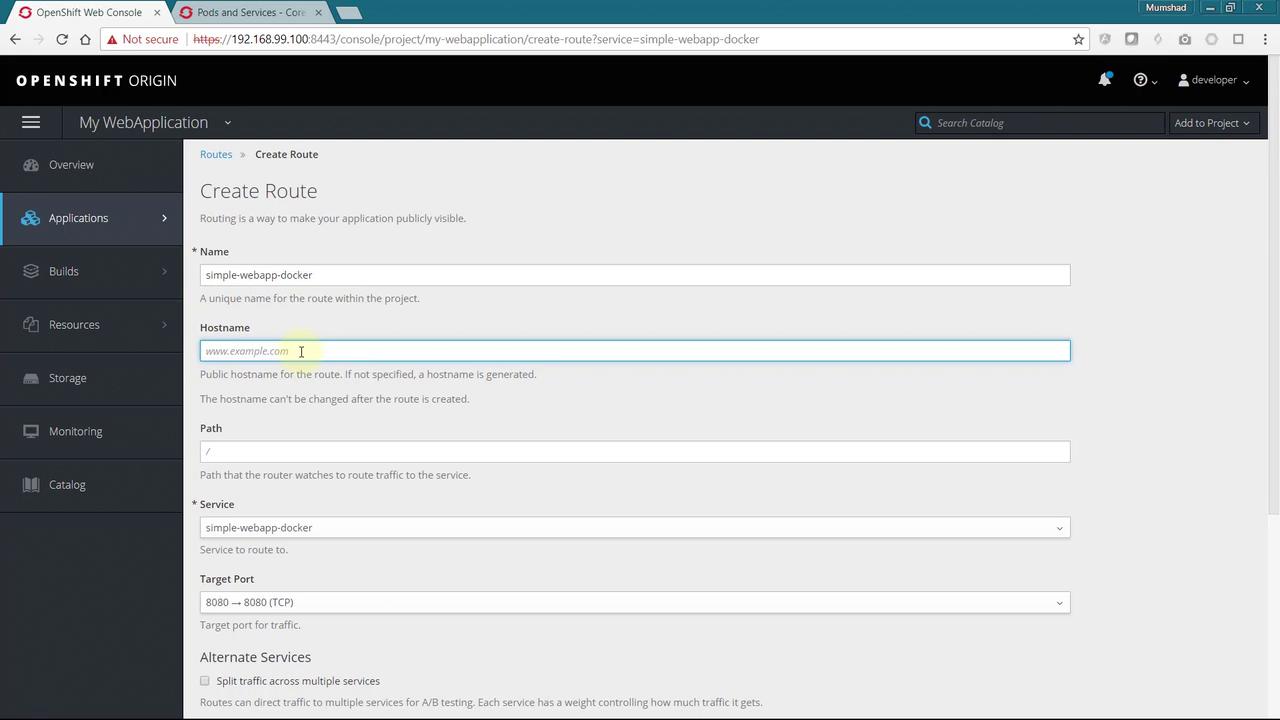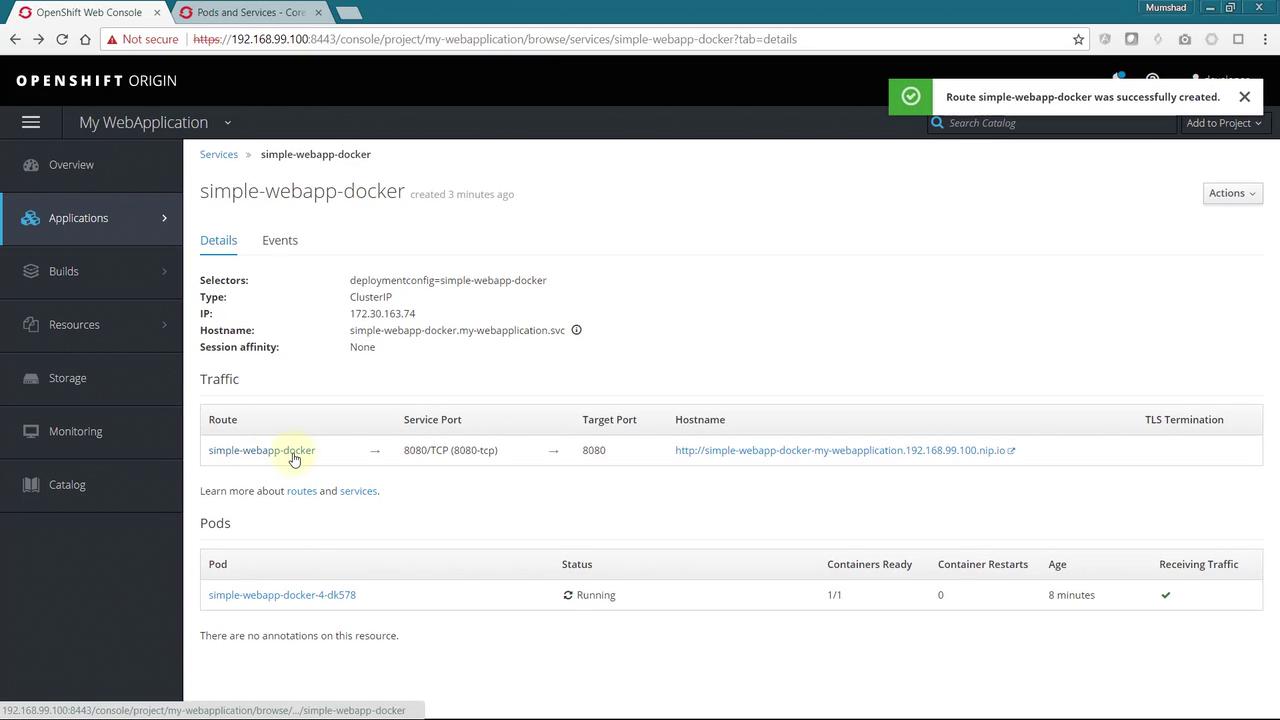OpenShift 4
Networks Services Routes and Scaling
Demo Services and Routes
Welcome to this comprehensive guide on services and routes in OpenShift. In this article, we will explore how to configure and expose your application within OpenShift, both for internal engagement and external access.
Creating a Service for Internal Access
After setting up the build and deployment of your application, the next step is to allow internal communication within the OpenShift cluster. Begin by creating a service configuration file.
First, obtain a service configuration template from the Learn More link. Create a new file called service-config.yml and add the following YAML configuration. Notice that this configuration updates the service name and sets a selector to associate the service with the Pods running your application.
apiVersion: v1
kind: Service
metadata:
name: simple-webapp-docker
spec:
selector:
docker-registry: default
clusterIP: 172.30.136.123
ports:
- nodePort: 0
port: 5000
protocol: TCP
targetPort: 5000
Based on the existing configuration and the deployment-config label in use, update your selector accordingly. Since the clusterIP is assigned automatically when the service is created, you can remove its static value. Your updated configuration should look like the following:
apiVersion: v1
kind: Service
metadata:
name: simple-webapp-docker
spec:
selector:
deploymentconfig: simple-webapp-docker
ports:
- nodePort: 0
port: 5000
protocol: TCP
targetPort: 5000
Next, modify the port configuration to match your application’s listening port. If your application listens on port 8080, update the configuration as shown:
apiVersion: v1
kind: Service
metadata:
name: simple-webapp-docker
spec:
selector:
deploymentconfig: simple-webapp-docker
ports:
- name: 8080-tcp
port: 8080
protocol: TCP
targetPort: 8080
Once the file is ready, use the Import YAML/JSON option in the OpenShift console to paste its contents and click Create to establish your service.
After the service is created, click on it to view its details.

An IP address (for example, 172.30.163.74) is now automatically assigned to your service. This IP address allows internal traffic to reach your application, although it is not exposed for external access.

To verify internal connectivity, log into the OpenShift cluster console (e.g., using the Minishift VM) and run a curl command against the assigned IP address and port.
Creating a Route for External Access
To expose your application to external users, you need to create a route. You can achieve this via a YAML-based approach or through the OpenShift web console. To use the UI, click on the Create Route link and fill in details such as name and hostname. If you leave the hostname blank, OpenShift generates one based on your application name.

Custom Hostnames
If you opt for a custom hostname (e.g., www.example.com), ensure your external DNS settings correctly route traffic to your OpenShift cluster. Routes within the cluster will then direct requests to the appropriate application based on the hostname.
After configuring the route with your desired settings (or simply accepting the default configuration), create the route. Once complete, the generated hostname will appear in the service details.

Clicking the generated link will take you directly to your application.
End-to-End Testing
To demonstrate an end-to-end test, update your application code. For instance, change the welcome message from "Update 4" to "Update 5." This change will trigger a new build and deployment. Below is an example of the updated code snippet:
@app.route("/")
def main():
return "Welcome! Update 5"
@app.route("/how are you")
def hello():
return "I am good, how about you?"
if __name__ == "__main__":
app.run(host='0.0.0.0', port=8080)
Once the build and deployment processes are complete, refresh your browser to verify that the updates are reflected in your application.
Conclusion
This guide has walked you through the process of setting up services and routes in OpenShift to enable internal and external access for your application. With these configurations, you can efficiently manage how your applications are exposed and accessed. Stay tuned for more in-depth topics in our upcoming sections!
Watch Video
Watch video content